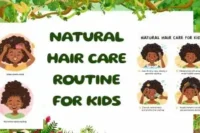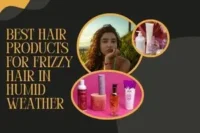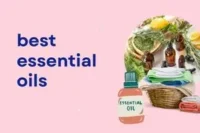DIY Hair Care for Dry Hair- Proven Tips for Instant Hydration and Shine
Published: 30 Mar 2025
Struggling with dull, lifeless locks? DIY hair care for dry hair is your secret weapon! When heat styling, harsh weather, and chemical-laden products leave your strands parched and brittle, nature holds the cure. Discover how simple kitchen ingredients can transform your hair from frazzled to fabulous without expensive salon treatments. Ready to unlock the magic of all-natural hydration? Let’s dive in!
Before You Start: Know Your Hair Type
Before you begin your DIY hair care journey, it’s important to understand your hair type. Some people even have more than one type on different parts of their head.

When you know your hair type, you can choose the right products, oils, and methods that will work for you. This is the first step to getting healthy, shiny, and hydrated hair.
What Does Hair Type Mean?
Your hair type is mainly based on the shape of your hair strands and how they naturally grow from the root. The most common way to classify it is by curl pattern, from straight to coily. But other details like:
- Thickness (fine, medium, thick)
- Porosity (how well your hair absorbs and holds moisture)
- Density (how much hair you have per square inch of scalp)
…also play an important role in how your hair behaves.
What Types of Hair Are There?
- Type 1 – Straight Hair
Smooth, shiny, and reflects light well. Often hard to curl and may get oily faster. - Type 2 – Wavy Hair
Has natural bends or “S” shapes. It can get frizzy, but it has a nice natural texture. - Type 3 – Curly Hair
Forms defined spirals or ringlets. Prone to dryness and frizz without moisture. - Type 4 – Coily Hair
Tight curls or zigzag patterns. Often, the most delicate and need extra hydration.
What Does Hair Type Mean?
Hair type is based on the shape of your hair strand and how it naturally grows. It’s mostly about your curl pattern, from straight to tight coils. Other factors like thickness, porosity, and density also matter, but your curl pattern is where it all begins.
What Types of Hair Are There?
There are four main hair types:
- Type 1 (Straight Hair): Smooth, shiny, and often hard to curl.
- Type 2 (Wavy Hair): Has gentle bends or S-shaped waves.
- Type 3 (Curly Hair): Defined spirals or ringlets that may get frizzy.
- Type 4 (Coily Hair): Tight curls or zigzag patterns, often dry and delicate.
Understanding Dry Hair
Dry hair happens when your strands can’t get or keep enough moisture. Without this moisture, hair loses its natural shine, feels rough to the touch, and breaks more easily. Several things can cause dryness. Overusing heat styling tools like blow dryers, straighteners, or curling irons can damage your hair cuticle, making it harder for your strands to hold moisture.

Harsh shampoos with sulfates strip away your natural oils, while washing your hair too often removes the protective layer your scalp produces. Even environmental factors like strong sun, cold wind, or chlorine from swimming pools can make dryness worse.
When you understand the causes, you can treat your hair the right way. Adding nourishing treatments, such as dry hair masks, can restore hydration, improve texture, and help prevent breakage.
What Causes Dry Hair?
- Heat damage from styling tools like blow dryers, straighteners, or curling irons
- Sulfate-heavy shampoos that strip away natural oils
- Environmental stressors such as sun, wind, or chlorine
- Over-washing that disrupts your scalp’s natural oil balance
Signs of Dry Hair
You may have dry hair if you notice:
✔️ Rough, straw-like texture
✔️ Excessive frizz and split ends
✔️ Dull, lifeless appearance
✔️ Increased breakage when brushing or styling
Common causes include heat styling, harsh shampoos, and over-washing. Environmental factors like the sun or wind also play a role. Understanding dry hair helps you treat it the right way. Using dry hair masks regularly can restore moisture and improve hair health.
DIY Solutions for Dry Hair
DIY solutions for dry hair can restore softness and shine naturally. Try a coconut oil and honey hair mask for deep hydration, and apply coconut oil at night to allow nutrients to deeply penetrate your strands while you sleep.

An avocado and olive oil blend helps nourish brittle strands. Rinse hair with diluted apple cider vinegar to balance pH and boost shine. Always use gentle, sulfate-free shampoo to avoid stripping natural oils.
1. Nourishing Hair Masks
Nourishing Hair Masks deeply hydrate and repair dry, damaged strands using natural ingredients.
Avocado & Honey Mask
- Mash 1 ripe avocado, 2 tbsp honey, and 1 tbsp olive oil.
- Apply for 30 minutes, then rinse with cool water.
Banana & Yogurt Mask
- Blend 1 banana, ¼ cup yogurt, and 1 tbsp coconut oil.
- Leave on for 20 minutes before shampooing.
💡 Tip: Use 1–2 times weekly for deep hydration.
2. Homemade Leave-In Conditioner
- Mix ¼ cup aloe vera gel, ½ cup water, and 5 drops rosemary oil.
- Spray on damp hair to tame frizz and lock in moisture.
3. Scalp Exfoliation Treatment
- Combine 2 tbsp brown sugar and 1 tbsp coconut oil.
- Massage gently into the scalp to remove dead skin and improve circulation.
4. Heat-Free Styling Alternatives
- Braids or buns for natural waves
- Microfiber towels to minimize friction
- Silk pillowcases to reduce breakage
5. Routine Adjustments for Healthier Hair
- Wash hair 2–3 times weekly (avoid daily washing).
- Use lukewarm water (hot water dries out strands).
- Trim split ends every 6–8 weeks.
Pro Tips for Success:
- Start slow – Introduce one new remedy at a time to see how your hair responds
- Measure carefully – Eyeballing ingredients can lead to ineffective (or messy) results
- Be patient – Natural solutions work gradually but deliver lasting results
Essential Safety Checks:
•Always dilute acidic ingredients (lemon, vinegar)
• Never apply heat to oil treatments (fire hazard)
• Discontinue use if irritation occurs
Your hair transformation begins today!
Bookmark this guide. Pro Tips for Success:
- Start slow – Introduce one new remedy at a time to see how your hair responds
- Measure carefully – Eyeballing ingredients can lead to ineffective (or messy) results
- Be patient – Natural solutions work gradually but deliver lasting results
Essential Safety Checks:
•Always dilute acidic ingredients (lemon, vinegar)
• Never apply heat to oil treatments (fire hazard)
• Discontinue use if irritation occurs
Conclusion
Embrace the power of DIY hair care for dry hair and unlock your hair’s natural potential! These simple, natural solutions put you in control – no expensive salon treatments required. With consistent care, you’ll see strands transform from brittle to beautiful, one treatment at a time.
And revisit your progress in 4 weeks – we predict you’ll be amazed by the difference. Do you have questions as you begin your DIY journey? Drop them below!
FAQs for DIY Hair Care
Yes, you can, but it’s important to choose lighter ingredients that won’t weigh your hair down. Ingredients like aloe vera, yogurt, or honey are ideal for oily hair, whereas heavy oils may make it greasy. Limit treatments to 1–2 times per month to prevent over-moisturizing your scalp. Always rinse thoroughly to remove any residue and avoid buildup. You can also focus treatments on the mid-lengths and ends rather than the roots to maintain balance.
Yes, coconut oil can be too heavy for fine or thin hair, making it appear flat or greasy. To avoid this, apply only a small amount to the ends of your hair and keep it away from the roots. If your hair gets oily quickly, consider mixing coconut oil with lighter oils like argan or grapeseed to reduce heaviness. Using it sparingly and occasionally rather than frequently ensures your hair remains soft without losing volume.
Leftover hair masks should be stored in a clean, airtight container to maintain freshness. Keep them in the refrigerator, which slows bacterial growth and prolongs shelf life. Use the mask within one week for optimal effectiveness. Always scoop the mask with a clean spoon or spatula to prevent contamination. Label the container with the date to track how long it has been stored.
It’s generally not recommended to leave DIY masks on overnight. Most masks should be applied for 20–30 minutes to allow nutrients to penetrate without clogging follicles. Leaving them on too long may irritate your scalp or cause buildup. The exception is a tiny amount of coconut oil on the ends for extra moisture, which is usually safe overnight. Always monitor your scalp for any signs of irritation if trying longer treatments.
Absolutely! Curly hair benefits from extra moisture and gentle ingredients. Masks with avocado, aloe vera, or yogurt can help define curls, reduce frizz, and enhance shine. Avoid alcohol-based or harsh chemical ingredients, as they can dry out curls. Apply treatments generously to the hair strands while avoiding heavy application on the scalp. Regularly moisturizing with these remedies keeps curls bouncy and healthy.
Honey is naturally thick and sticky, which can make hair feel tacky if not properly diluted. Mix honey with water, yogurt, or oils to make it easier to apply and rinse out. Always use lukewarm water for rinsing, as hot water can make honey harder to remove. Ensuring complete rinsing prevents residue buildup and maintains softness. Using moderate amounts rather than heavy layers also helps avoid stickiness.
No, essential oils are very concentrated and can irritate or burn your skin. Always mix them with a carrier oil, such as coconut, jojoba, or almond oil. A safe ratio is a few drops of essential oil per tablespoon of carrier oil. Do a patch test before applying to check for allergies or sensitivity. Apply gently to the scalp, massaging in small amounts to improve circulation without causing irritation.
Brown sugar is gentle and usually safe for color-treated hair when used properly. It dissolves easily in water, making it milder than salt scrubs or chemical exfoliants. Avoid aggressive scrubbing, as that can lead to breakage or damage to colored strands. Use a light circular motion and rinse thoroughly. Sugar scrubs can help remove buildup and leave hair feeling soft without stripping color.
Store your DIY conditioner in a clean, airtight container and keep it refrigerated to extend shelf life. Always use clean hands or a spoon to remove the product to prevent bacterial growth. Adding natural preservatives like vitamin E oil, rosemary extract, or a few drops of essential oil can also help maintain freshness. Use the conditioner within 1–2 weeks for optimal results. Proper storage ensures your DIY treatments remain safe and effective.
If you don’t see improvement after a month, consider other factors like hard water, hormonal changes, or protein overload from treatments. Try switching to a clarifying wash, such as an apple cider vinegar rinse, to remove buildup. Ensure your diet is supporting hair health with enough protein, vitamins, and minerals. If issues persist, consult a trichologist or dermatologist to check for underlying scalp or hair conditions.

- Be Respectful
- Stay Relevant
- Stay Positive
- True Feedback
- Encourage Discussion
- Avoid Spamming
- No Fake News
- Don't Copy-Paste
- No Personal Attacks

- Be Respectful
- Stay Relevant
- Stay Positive
- True Feedback
- Encourage Discussion
- Avoid Spamming
- No Fake News
- Don't Copy-Paste
- No Personal Attacks





